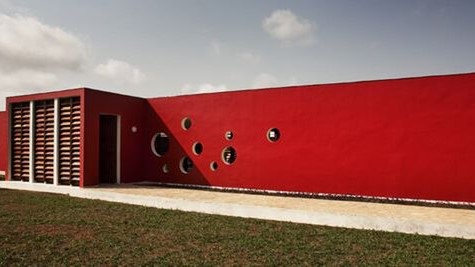BANGUI, Central African Republic — In the main ward of Bangui’s Hôpital Communautaire, the air is heavy and warm. A single ceiling fan turns lazily, its blades pushing stale air over a row of narrow metal beds. The light flickers, as it does most days. On one of the beds, a girl of six lies motionless beneath a thin sheet. She is being treated for severe malaria. The nurse at her side has no gloves, no running water, and no working thermometer.
Such scenes unfold daily across the Central African Republic (CAR), where the health system has been worn thin by decades of conflict and neglect.
Once ranked among the lowest in the world for human development, CAR has struggled to reverse a decline in life expectancy that has set it apart from most other nations. Its hospitals, clinics, and rural health posts remain in a state of persistent fragility, their shortages visible in everything from missing medicines to absent staff.
Infrastructure in Ruin
The scale of the breakdown is stark. Médecins Sans Frontières estimates that more than 70 percent of the country’s health facilities have been damaged, looted, or abandoned since conflict flared in 2013. Outside the capital, some buildings still stand, but their shelves hold no antibiotics, antiseptics, or even gauze.
In the rural prefectures of Ouham and Haute-Kotto, health care often exists only on paper. Vaccination drives are postponed or canceled when insecurity cuts off access. For many residents, reaching a functioning clinic means walking for hours along unpaved roads — a journey that sometimes ends with no treatment at all.
“We don’t have roads, fuel, or salaries,” said Dr. Marcel Ndowé, a regional medical officer near Bambari. “Sometimes we walk half a day to reach a patient, only to realize we don’t have the tools to help them.”
A Convergence of Crises
The World Health Organization describes CAR’s health emergency as a “syndemic,” in which disease, poverty, and violence feed into each other. Malaria, tuberculosis, HIV/AIDS, and measles remain entrenched. UNICEF warns that malnutrition among children under five is critical in several regions.
The arrival of COVID-19 deepened the strain, revealing shortages in oxygen supply, weak disease surveillance, and a lack of protective gear. Fewer than one in three people have been vaccinated against the virus, placing CAR among the lowest in Africa for coverage.
The health toll is not limited to the physical. The International Committee of the Red Cross reports rising cases of untreated trauma, anxiety, and depression, particularly among those displaced by violence.
Reliance on Aid, Vulnerable to Setbacks
Government health spending covers only a fraction of the system’s needs, leaving the country heavily dependent on external donors. The World Bank, the Global Fund, and the European Union have funded emergency repairs, mobile clinics, and equipment purchases. Yet gains are fragile, often undone when fighting cuts supply lines or forces aid agencies to suspend operations.
“Dependency on humanitarian aid creates cycles of progress and collapse,” said a senior health adviser for the United Nations in Bangui, who requested anonymity. “When security worsens, everything stops. We can’t build a system on sand.”
Even in Bangui, shortages are routine. Hospitals frequently run out of drugs for chronic conditions such as hypertension and diabetes. The maternal mortality rate remains among the highest in the world.
Endurance on the Front Lines
In Bria, midwife Clarisse Yadé works in a two-bed clinic without electricity. She delivers about 20 babies each month, often with nothing but the flashlight on her mobile phone. “It’s not ideal,” she said, “but if I don’t, who will?”
Volunteer health brigades, backed by the International Rescue Committee, travel by motorbike into isolated areas, providing vaccinations, first aid, and health education in local languages.
The government has pledged to prioritize health in its national recovery plan, but critics cite delays and limited transparency. A long-delayed national health census, now scheduled for late 2025, is expected to provide the most comprehensive picture yet of the system’s needs — if it proceeds.
The Uncertain Road Ahead
As evening falls over Bangui, the hum of a generator powers the city’s pediatric hospital. The question remains whether a country scarred by years of conflict can build a sustainable health system out of the ruins.
“Resilience isn’t enough,” Dr. Ndowé said. “We need resources, training, and peace — real peace. Otherwise, we’re just surviving, not healing.”
Sources
- Médecins Sans Frontières. Central African Republic: Annual Activity Report. 2024.
- United Nations Development Programme. Human Development Index Report. 2023.
- World Health Organization. Health Emergency Response in Central Africa. 2024.
- UNICEF. Nutritional Crisis in the Central African Republic. 2024.
Meta description:
The Central African Republic’s fragile health system struggles under conflict, poverty, and disease, relying on aid to keep vital care from collapsing.

